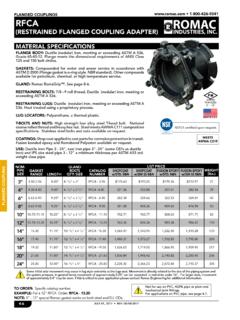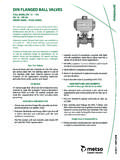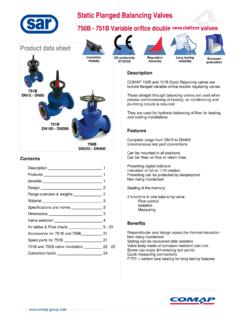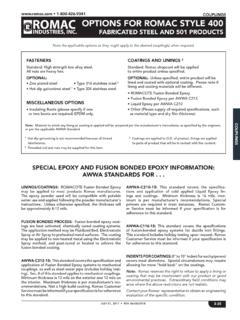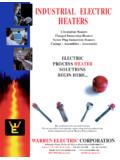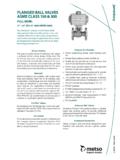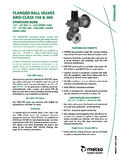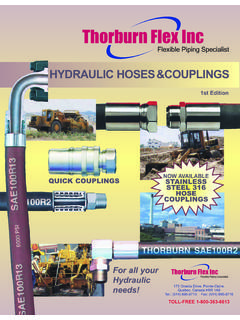Transcription of Flexible Couplings COUPLING NOMENCLATURE - RO-QUIP
1 Flexible CouplingsPage V-C COUPLING NOMENCLATUREF lexible Couplings Page C-1C . C OUPL ING NOM ENC L A T URETermDefinitionAccessory SetAccessory Set is package of hardware used to assembly COUPLING components. T his mayinclude, fasteners, lube plugs, shims, plate, gaskets, PlateAn adapter plate, also known as a solo plate, is an auxiliary device required to rigidlyhold in alignment the floating sleeve at the drive end of a flex-hub COUPLING to allowsolo operation of the driver without the necessity of dismounting the COUPLING S haftW hen aligned, the two shafts are coaxial with a specified separationAligning S urfaceAligning S urface is used to establish the axis from which a part (or COUPLING ) is locatedfor the purpose of SpeedAllowable speed relates to application conditions and experience, and includesconsideration of misalignment, loading, and system characteristics. Allowable speedshall not exceed rated maximum speed rating of the Misalignment DoubleEngagementFor a double-engagement COUPLING , COUPLING angular misalignment is the minor anglebetween the axial centerline of the structure joining the two flexing elements and either ofthe shaft centerlines.
2 T hus, there are two misalignment angles associated with a double-engagement COUPLING . T hese two angles are not necessarily equal, since they are theresult of common parallel offset combined with the angular misalignment of therespective shaft Misalignment-GeneralAngular misalignment is the minor angle between two shafts when the two shafts are notcoaxial, and their axes are not Misalignment-SingleEngagementFor a single-engagement COUPLING , COUPLING angular misalignment is the minor anglebetween the two shaft Gear CouplingDesignAn anti-sludge design minimizes sludge-gathering pockets in continuously F actor (see S erviceF actor)Service factor or Application Factor is applied to the normal operating torque. Itaccounts for unusual conditions that may occur receptively such as compressor fouling,or may account for the real operating conditionsAssembly BalanceAssembly balance is a procedure where a complete assembled COUPLING is balanced as DisplacementAxial displacement is a change in the gap between the shaft ends of two coupledmachines, usually caused by thermal expansion.
3 Axial Natural FrequencyAxial natural frequency (ANF): is a cyclic response frequency determined by the mass ofthe Flexible center element acting against the axial spring rate of the Flexible spring rate may vary with the deflection of the Flexible element; therefore, afrequency band corresponding to deflection amplitudes from zero to the maximumallowable amplitude must be Reaction Force(Transmitted Axial Force)Transmitted axial force is the axial force transmitted through the COUPLING imposed bythe operating conditions (axial deflection, misalignment, speed, temperature, etc.)Axial Reference PointAxial reference point: the axial position on the shaft of the driving or driven machine(normally the extreme end of the shaft) from which axial distances are measuredAxial StiffnessAngular stiffness is a measure of how much force or bending moment is required toangularity misalign a COUPLING to a specified angle while under torque LifeThe B10 Lif e of an univ ersal joint bearings def ined as the lif e expectancy f or a 90%probability of surv iv Couplings Page C-2 TermDefinitionB acklashB acklash is the circumferential clearance in the Flexible element(s) that is necessary toprovide angular misalignment capability and Gear CouplingA batch-lube COUPLING is designed to be lubricated by a periodically changed charge ofgrease or (angular) stiffnessBending (angular)
4 Stiffness is the ratio of restoring moment to angular ouplings which slide while accommodating angular misalignment do not possessangular stiffness since material deflection does not occurBushingT he bushing is an adapter or adapter assembly used to mount the COUPLING componentsor COUPLING assembly on the mandrelCenter of GravityCenter of gravity for a half COUPLING is the location at which the weight of that halfcoupling can be considered to be concentrated. T he half effective center of gravity isreferenced from the equipment shaft end; with a positive location being beyond the shaftend and a negative location being within the CouplingA chain COUPLING consists of two hubs with sprocket teeth which engage or mesh with astrand of BalanceC heck balance is a procedure wherein an assembled COUPLING is placed on a balancemachine and the potential unbalance is measured. T his can be done to a componentbalanced COUPLING , or to an assembly balanced Fit BoreA clearance fit bore designates a condition where the hub bore diameter is equal to orlarger than the shaft diameterComponent BalanceComponent balance is a procedure for improving COUPLING balance in which thecomponents or factory assemblies are balanced before assembly of the couplingContinuous T orque RatingCoupling continuous rated torque (T c): is the COUPLING manufacturers value of torquecapabilities of the COUPLING utilizing a combination of speed, angular misalignment, andaxial GearCouplingA continuous-lube COUPLING is designed to be lubricated by a continuous external supplyof oil directed at or into the gear Mass SimulatorCoupling mass simulator.
5 An auxiliary device designed to correctly simulate both theeffective mass and the effective location of the center of mass of a half COUPLING withrespect to the shaft on which it is Rated Speed(Maximum speed) COUPLING rated speed the maximum speed at which the COUPLING is capable oftransmitting the COUPLING continuously rated torque where simultaneously subjected tothe rated angular misalignment and the COUPLING rated axial oupling ratingC oupling rating is a torque capacity at rated misalignment, axial displacement and speedCoupling flywheel effect (WR2)(Polar weight moment of inertia) COUPLING flywheel effect (WR2) (Polar weight moment of inertia) is a measure of thepotential of the COUPLING to resist change in speed. WR2 is the product of the weight ofthe COUPLING times the square of the radius of gyration. T he radius of gyration is theradius at which the mass of the part ( COUPLING ) can be considered concentratedC rown DiameterT he crown diameter is the major diameter of the external gear teethDampingDamping is the absorption or dissipation of oscillatory energy.
6 Damping may benecessary to limit the buildup of transient or steady state resonant oscillations in asystemDamping coefficientDamping coefficient is the ratio of damping energy during one cycle to elasticdeformation energyDamping ratio (factor of criticaldamping)Damping ratio is the ratio of actual damping coefficient (C) to the critical dampingcoefficient (CC) . The critical damping coefficient is a measure of the minimum dampingthat will allow a displaced system to return to its initial position without Couplings Page C-3 TermDefinitionDesign Factor of Safety ( )Design Factor of Safety ( )is the factor of safety at the catalog rated conditions oftorque, speed, misalignment and axial displacement. It is used by the manufacture toestablish the COUPLING rating,Diametral C rown C learance (tipclearance)T he Diametral crown clearance is the clearance between the outside diameter of thecoupling's external teeth (whether on a hub or on a marine spool piece) and the rootdiameter of the internal teeth in the sleeve when the COUPLING is in perfect COUPLING (metallicdiaphragm COUPLING )Metallic diaphragm COUPLING : a COUPLING consisting of one or more metallic flexibleelements in the form of thin circular plates that are attached to one part of the COUPLING attheir outer diameter and the other part at their inner diameterDisc COUPLING (metallic disccoupling)Metallic disc COUPLING ; a COUPLING consisting of one or more metallic Flexible elements thatare alternately attached to the two parts of the COUPLING .
7 The attachment points beingsubstantially at the same distance from the centerlineDistance between S haft Ends(BS E)T he distance between shaft ends is defined as the distance from the face of one shaft (including any thread end) to the face of the next shaft. F or integral flanges, thismeasurement shall be from the mating Engagement COUPLING (Double Flex)Double engagement refers to a COUPLING with two flexing planes. T his type of couplingcan accommodate parallel offset, angular misalignment, and axial CompressionCouplingElastomeric compression COUPLING : a COUPLING in which the torque is transmittedthrough one or several elastomeric elements. T hey ca be categorized into two generaltypes, compression and shear, depending upon the way torque is transmitted through F lexible ElementElastomeric Flexible element COUPLING : a COUPLING in which the torque is transmittedthrough one or several elastomeric elements.
8 T hey can be categorized into two generaltypes, compression and shear, depending on the way torque is transmitted through theflexible Shear CouplingElastomeric shear COUPLING : a COUPLING in which the torque is transmitted through anelastomeric element which is principally loaded in shear. T he element may be in theform of a type, a bellows (with one or more convolutions) or a diaphragm. A singleelastomeric element is usually able to accommodate angular misalignment, parallel offsetand axial Insulated C ouplingAn electrically insulated COUPLING prevents the flow of electrical current from one shaft tothe other through the COUPLING by inserting insulation between the flanges and aroundthe flange LimitEndurance limit is the fatigue limit of a COUPLING component subjected to combinedconstant and alternating stresses. Beyond this limit the material can be expected to failafter some finite number of cyclic loads.
9 Below this limit the material can be expectedto have infinite life (or a factor of safety greater than 1)Factor of safety ( )Factor of safety ( )factor of safety is used to cover uncertainties in a COUPLING design;analytical assumptions in stress analysis, material unknowns. manufacturing tolerances, Under given design conditions the is the ratio of strength (or stress capacity)to actual predicted stress; where the stress is a function of torque, speed, misalignmentand axial factor of safetyT he fatigue factor of safety is the factor at the published rated conditions of torque, speed,misalignment and axial displacement. It is used by manufacturer to establish thecoupling ratingFlex Hub couplingA flex-hub COUPLING has the external gear teeth on the hubs and internal teeth in Couplings Page C-4 TermDefinitionFlexible Element CouplingsFlexible-element COUPLING describes both disk and diaphragm Couplings . A Flexible -element COUPLING obtains its flexibility from the flexing of thin disks or diaphragmsFlexing LengthFlexing length.
10 The axial distance between the effective flexing planes of a doubleengagement ShaftA floating shaft is typically a removable center member of a Flexible COUPLING assemblywhich is composed of two standard half Couplings (single engagement of single flexing)mounted on either end of a piece of shafting (solid or tubular) and is used to connect thedriving and driven shafts of equipment which are separated axially by greater than CouplingA flooded-mesh COUPLING is a continuously lubricated COUPLING in which the gear meshesare completely submerged in oil during normal CouplingGear Couplings transmit torque and accommodate angular misalignment, parallel offset,and axial displacement by relative rocking and sliding motion between mating, profiledgear Purpose CouplingGeneral Purpose COUPLING are Couplings for the transmission of power between therotating shafts of two machines for general purpose applications. Such applications willtypically require Couplings to transmit power at speeds not exceeding 3800 rpm betweenmachines in which the first lateral critical speed is above the running speed range (stiffshaft machines).

